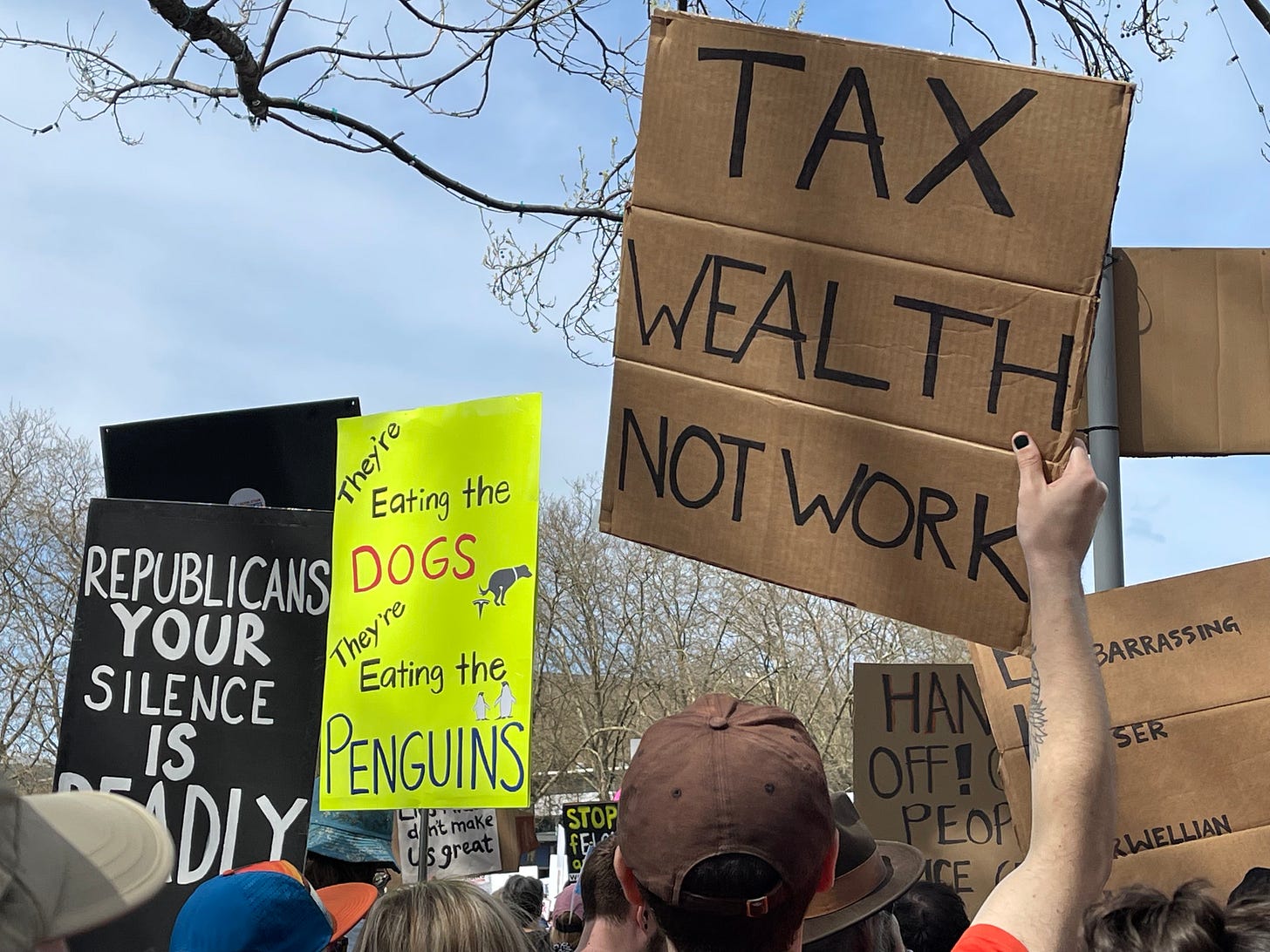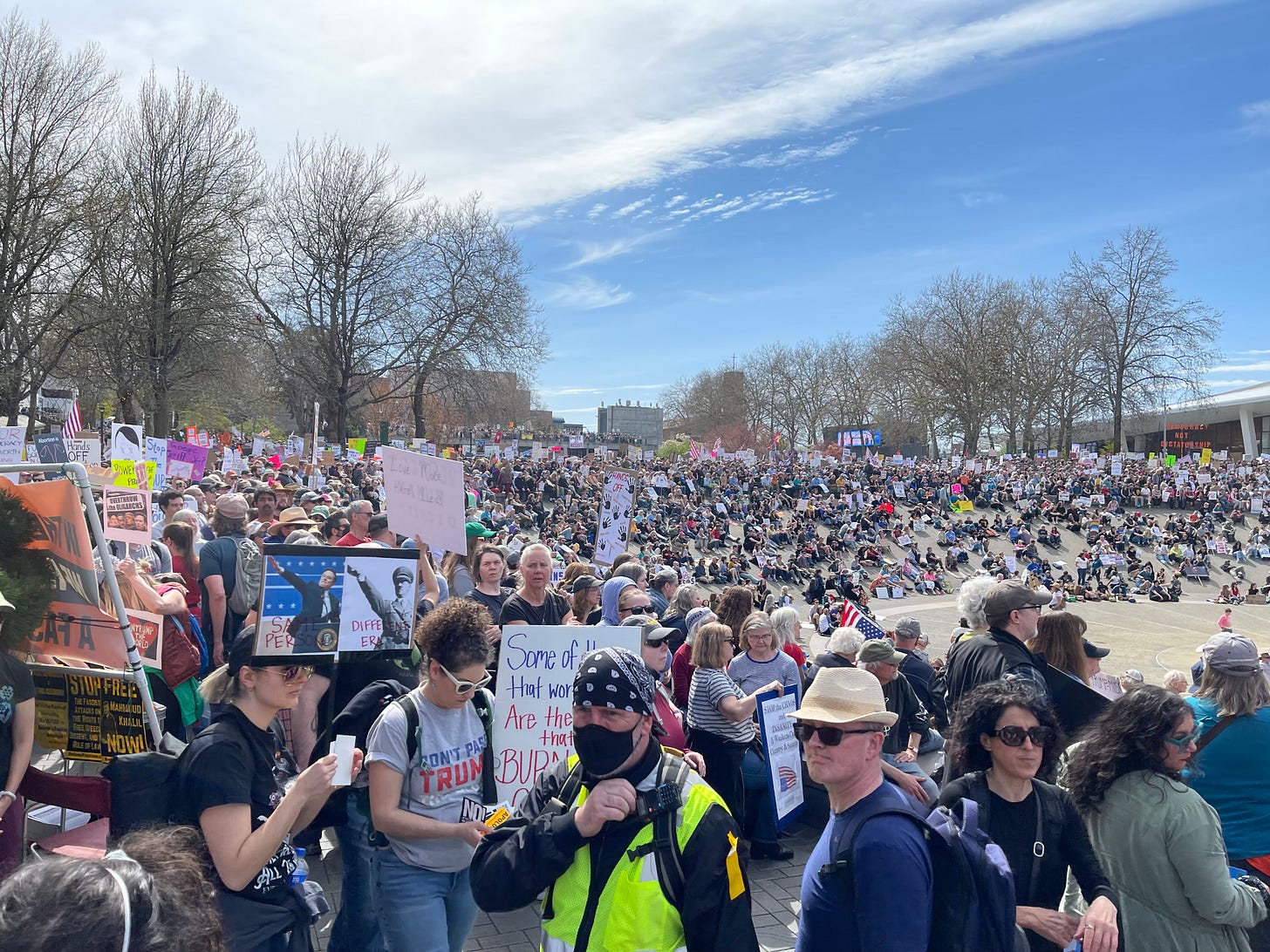How to be a professional fact checker
Avoid spreading misinformation online with a simple check list to consider before pushing the like or share button.
Democracy is a participatory sport. And so is journalism these days. That means we all have a responsibility to not contribute to disinformation online.
Clicking like or share on a social media post is easy to do without thinking. But we really should take a moment to assess the content before pressing the button. Please indulge me in a brief story before I share some tips on fact checking and how to avoid spreading misinformation.
Most of the time, the potential harm of spreading false information around the Internet is minimal. Last weekend I commented on a post that contained two errors that annoyed my journalist soul but were relatively harmless and not intentionally misleading. The writer – not a journalist but she posts a lot of “news” on Substack – had attended the New York City “Hands Off” march and posted that no journalists covered the protest.
The Seattle “Hands Off” at Seattle Center. (Photo by Donna Blankinship)
Her post received nearly 5,000 likes, was reposted nearly a thousand times and commented on more than a hundred times. Most of those comments slammed the media for boycotting this and other protests. But the truth is that many journalists were covering that march and posted stories and videos on their news sites that very afternoon. The writer didn’t bother to do a search on Google, which I did as soon as I saw what she had written.
I commented on her post, saying there were many media reports on the march in New York, on every TV network and in the New York Times. That’s what I found in about 30 seconds of searching. I could have looked deeper and potentially found a bunch more but I felt it was important to correct this misinformation immediately. About 15 people liked my comment, but the writer never corrected her post nor acknowledged the error.
The First Amendment gives us all the right to free speech. There’s no law against publishing false reports on protest marches or anything else, as long as it doesn’t hurt people. She could have posted that all the marchers were dressed up in costumes or marching naked and that would be allowed as well. So what’s my problem? As I’ve written before, I am worried about the future of journalism. If her false comments about news media coverage encouraged some of the people who read her post to cancel their subscription to a newspaper, that’s another step toward making professional journalism unsustainable financially.
Do we even need professional journalists? Aren’t citizen journalists stepping up to take their place? Yes, but very few of them have the capacity or financial freedom to do the government watchdog reporting we need today without the financial backing of a news organization. I actually know two citizen journalists who are doing amazing work informing the public. But each has gained professional skills along the way and turned their volunteer work into a reader- and listener-supported operation.
If you’re wondering about the second error in that short post from the writer “covering” the march in New York, she estimated march participation at 1 million people. She counted with her heart and offered no evidence she had done any actual counting. I have two issues with this, but honestly I didn’t care enough to correct her or share this information on Saturday. First, New York City and Washington, D.C., have seen many gigantic protests over the years and very few have been estimated to include 1 million people and those marches were planned and publicized weeks or months in advance. And second, with drones and some help from AI or even just human eyes, the actual size of the march could have been counted. I don’t know if anyone did this work but I know we used to count in a similar way – but with photographs taken by photojournalists from above – when I was covering big events as a journalist.
The Seattle “Hands-Off” rally. (Photo by Perry Blankinship)
My point is this: If you’re going to estimate something, keep it within reason. Don’t guess a march is the biggest since World War II, when we all know that is unlikely. There are just over 8 million people who live in New York City. Do we really think 12% of them participated on Saturday? Political folks estimate a quarter of New Yorkers are Republicans. Did this march attract more people than the latest Pride parade? More than the protests after George Floyd was murdered? More than the 1969 march on Washington against the Vietnam War? It’s possible, but not likely.
How to fact check the Internet and not share misinformation
Listen to your spidey sense. Does it even make sense? Everyone who participated in the marches on Saturday felt like they were parts of something big. How big was it? Does it have to be the biggest political march in New York history to be monumental?
Do the math. For this example: How many people could logically fit on a city block? How many blocks was the march?
Where is the information coming from? Who said this? Where did they get the information? If the poster isn’t clear, ask them. They may answer.
If in doubt, ask Google or another search engine a quick question. I searched for news about the march in NYC on April 5.
Go to a fact check site and research further if you are still unsure. Here are a few I recommend: Snopes, PolitiFact, FactCheck.org. You may also have local fact check sites.
If you still aren’t sure, take your finger off the repost button and move along.
All of this should take a minute or so. I know that’s more time that you were hoping to spend, but you won’t need to go past No. 1 on most posts. Just don’t assume other people are basing their posts on facts. A good writer can make anything seem plausible and not all the misinformation on the Internet is posted in good faith.
A note on responding to misinformation or factual errors. I think it’s appropriate to politely reach out to the original poster and point out what you think is incorrect and how you know. Many people will thank you and correct the error or explain why they believe you are mistaken. Some will ignore you. Others will blast you off the page in a less-than-polite way. Probably because of that last group, my husband says this practice is a bad idea. You’ll need to assess your own comfort with being a freelance fact checker. I think it’s worth it, but I also have been a professional truth teller for all my life and am used to ignoring trolls.
More from Civics for Adults
Stay safe: Legal rights for protesters
The First Amendment guarantees your right to protest. But it’s not an unlimited protection for free speech and peaceful assembly. You should pack some legal knowledge in your bag as you head out to that rally or march.
How worried should you be about the economy?
Welcome to all the new readers who have joined us lately. Last week’s post on The Constitution seems to have struck a chord. Civics for Adults is a subscriber-supported newsletter. Please consider joining the team. I can’t do this without your support. Here’s a
Social Security: Insurance program or "Ponzi scheme"?
The Social Security program is America’s most effective antidote to poverty. According to research by the Center on Budget and Poverty Priorities, about 22 million more adults and children would be living below the poverty line right now without social security. That’s a bigger economic lift than any other program in the United States.









Truth telling is vital. Excellent post! Thank you!